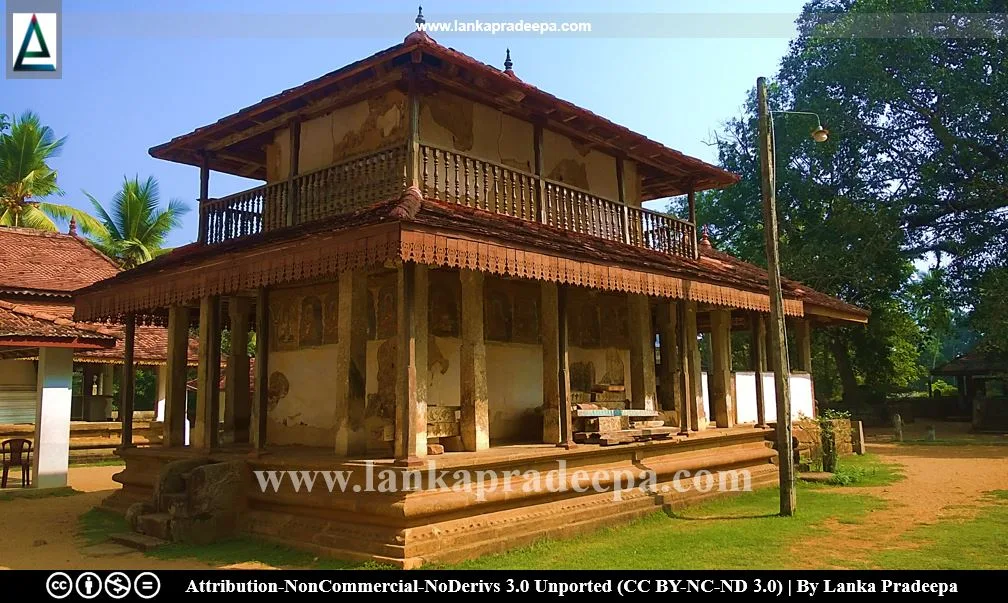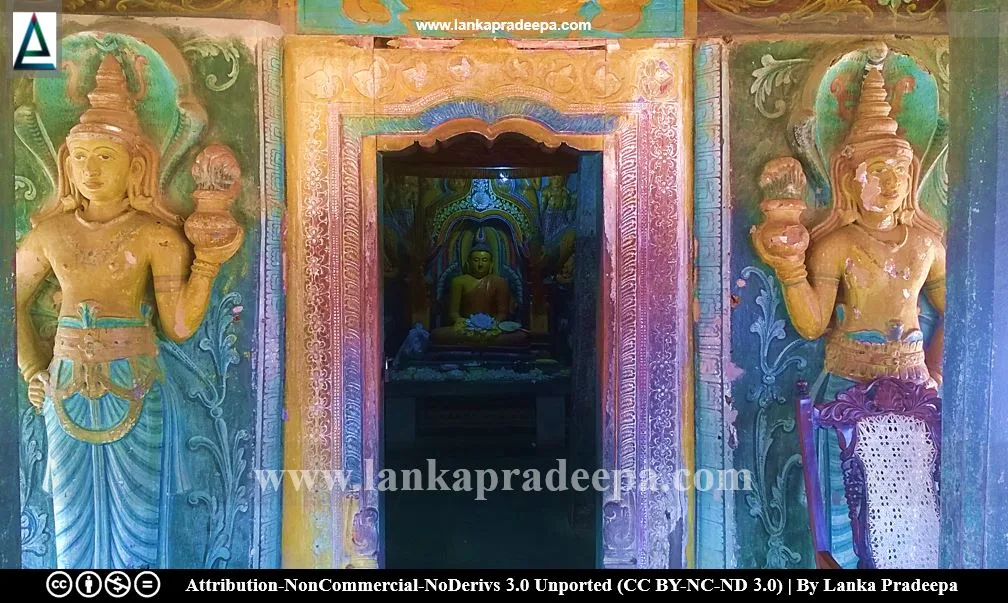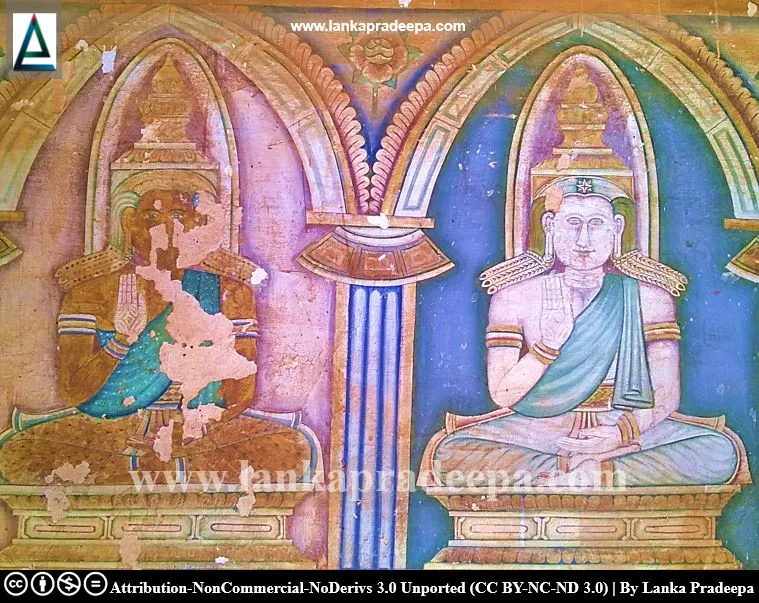
Dambadeniya Sri Vijayasundararama Viharaya, also known as Dambadeniya Vijayasundararamaya (Sinhala: දඹදෙණිය ශ්රී විජයසුන්දරාරාම විහාරය), is a Buddhist temple located in the ancient city of Dambadeniya in Kurunegala District, Sri Lanka. The site can be reached by travelling along the Giriulla-Narammala road about 5 km distance from Giriulla town.
History
Struggles to grab the power of the throne among the last rulers who came after King Nissankamalla (1187-1196 A.D.) had put the country's political environment into an unstable state (Dias et al., 2016). Magha (1215–1236 A.D.) of Kalinga (India) who came with a large army from Malabar (Kerala) easily invaded Sri Lanka during this period (Dias et al., 2016). As a result of the invasion, Polonnaruwa Kingdom collapsed and Dambadeniya became the new and the third kingdom of the country (Sudharmawathie, 2008).
King Vijayabahu III (1232-1236 A.D.) made Dambadeniya (Jambudoni) the capital city of the country to safeguard Buddhism, the kingdom, and its people. He built Vijayasundararama Viharaya as the main temple of the kingdom and started an academy similar to Maha Viharaya and Abhayagiriya in Anuradhapura. He also adopted the first Dambadeniya Kathikawatha (Dambadeniya edicts) at this temple with the presence of Gramavasi (village dwelling) and Aranyawasi (forest-dwelling) Bhikkus.

The next ruler, King Parakramabahu II (1236-1270 A.D.) constructed two temples for the sacred Tooth Relic of the Buddha; one on the Summit of the Rock Palace and the other on the premises of Vijayasundararama temple. The temple built at the rock palace was the permanent house for the Tooth Relic and the other at Vijayasundararamaya was used mainly for relic expositions (Seneviratna, 1987). He continuously made offerings to the relic at Vijayasundararama Viharaya and engaged in many meritorious deeds. It is said that, as a wish of the king, the Tooth Relic performed a miracle for seven and half hours by creating an image of Buddha walking in the sky (Holt, 2011) between the Temple of Tooth and the tree called Sapu Bodhiya. This tree can be seen today at the temple premises, located near the Temple of the Tooth building.
The Temple of the Tooth built in Vijayasundararama Viharaya was initially a three-storeyed building and later it was renovated during the reign of Kirti Sri Rajasingha (1747-1780 A.D.) by Meegasthenne Adikaram, the chief ruler of Sath-Korale (Seneviratna, 1987). He renovated this building as a two-story mansion (Seneviratna, 1987).


The Temple
The Temple of the Tooth building at Dambadeniya Vijayasundararamaya is considered to be the oldest (best conserved) such kind of building found in Sri Lanka. It has been built on a raised platform made of stone and the building is today used as an image house. Both lower and upper floors contain statues of Buddha and other sculptures and paintings belonging to several periods. The lower image house is encircled with an ambulatory of about 3 feet wide. Two stone slabs known as Veeragal are found at the entrance to the ground floor. These slabs are considered strange as they contain few figures related to Hindu tradition. The ground floor is connected to the upper story through a wooden stairway. The upper floor was initially used to deposit the Tooth Relic of the Buddha but after the removal of the relic from Dambadeniya, the upper floor became an ordinary Buddha shrine.
The Stupa of the temple has been built on an ancient platform that was once used to exhibit the Tooth Relic of the Buddha. The roof over the Stupa is sustained by several granite pillars. At the sides of the entrance to the Stupa house are two Korawak Gal (wingstones) carved with elephant figures.
Archaeological Museum
A small site museum of the Archaeological Department has been established on the premises of Vijayasundararama Viharaya. The museum is used to exhibit antiquities recovered from the temple as well as from the surrounding area.
A Protected Site
The ancient image house at the premises of Dambadeniya Vijayasundararama Raja Maha Viharaya in the Divisional Secretariat Division of Narammala is an archaeological protected monument, declared by a government gazette notification published on 9 March 1962.




References
1) Dias, M.;
Koralage, S.B.; Asanga, K., 2016. The archaeological heritage of Jaffna
peninsula. Department of Archaeology. Colombo. p.178.
2) Holt, J. (Editor), 2011. The Sri Lanka reader: history, culture, politics. Duke University Press. pp.105-106.
3) Seneviratna, A., 1987. The Temple
of the Sacred Tooth Relic: An Architectural History of the Daḷadā
Māligāwa, the Symbol of Buddhist Faith and Sovereignty in Sri Lanka. Government of Sri Lanka. p.59.
4) Sudharmawathie,
J.M., 2008. Historical significance of the kingdom of Dambadeniya,
Proceedings of the Annual Research Symposium 2008, Faculty of Graduate
Studies, University of Kelaniya. p.105.
5) The government gazette notification, no: 12977. 9 March 1962.

